Design
Tradition and cutting edge
07/02/17 15:07
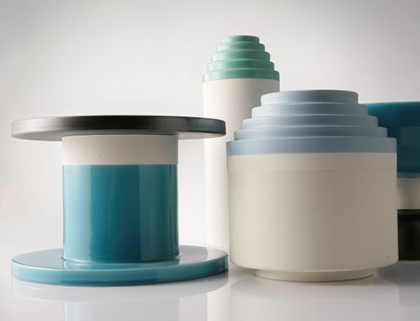
Internationally known for its excellence and creative spirit, it’s the passion and skill of the hands of those who work the ceramics that is at the heart of Bitossi Ceramiche. Jane Pople takes a close look at the renowned brand.
Combining the traditional art of ceramic making with cutting edge style has been the aim of Italian brand Bitossi Ceramiche since the early 1900s. This prestigious brand’s long history is founded on a profound understanding of the material, and its natural propensity for experimentation. The brand’s roots stem from the productive ceramic tradition that existed in Montelupo Fiorentino from the 1500s. Tracing its beginning in ceramic production to as early as 1871, the Bitossi family business has centuries of expertise.
Guido Bitossi was heir to this long ceramic tradition and established the ‘Manifattura Maioliche Artistiche’ in 1921, a centre featuring typical local craft works. Thanks to the art direction of Aldo Londi, traditional production methods and procedures were renewed, and really this was the beginning of Bitossi Ceramiche as we now know it today.
Aldo’s meeting with the now iconic architect Ettore Sottass marked a significant turning point for the brand and this important encounter led to a close collaboration with Londi for many years. Together, this visionary duo created many successful designs and continued to expand their skills and creative genius. Bitossi Ceramiche is still in the original factory today, and it is still the go-to brand for leading designers fascinated by the historical value of the company, by craft production and the creation of unique collections.
Since 1871, the Bitossi family has collected over 7,000 historical works, documents and material related to artistic ceramic production. This vast archive is an attempt to preserve and valorise the historic memory that the family has been collecting over the years. The Archivio Industriale Bitossi (Bitossi Industrial Archive) spreads over seven rooms in the historic Colorificio building near to the factory. This collection also includes important ceramics and documents from other factories, in particular those from the Florentine ceramics area. In order to safeguard the heritage of this important area and its work in ceramics, the Vittoriano Bitossi Foundation became involved in 2010. One of the Foundation’s statutory purposes is precisely: “the preservation and valorisation of the history of artistic ceramics in the Florentine territory.”
The Foundation’s main sponsor is the Colorobbia Group and its chief purpose is the enhancement and dissemination of the ceramic culture, historical research and scientific research. It promotes cultural initiatives involving modern and contemporary art, also on the international scene. In addition, it performs supporting activities in the health sector in ceramics districts where the Group’s companies are located.
In 2003, the MAIB – Museo Artistico Industriale Bitossi (Bitossi Industrial Art Museum) – was opened to house this collection. Temporary exhibitions offer various insights into production periods and styles linked to the talent of Aldo Londi, the company's historical art director, and also into design. The museum and archive are run by the Foundation, a direct offshoot of the Bitossi family.
The Bitossi Artistic Industrial Museum opened in 2003, and is world renowned as an industrial museum that exhibits artistic ceramics productions of the twentieth century, and in particular, from the mid nineteen-fifties up until the present time. It currently covers two rooms in a historic 1929 building, which was the first site of the Bitossi factory.
The Museum organises temporary thematic exhibitions mainly on the huge historical production heritage with displays of the factory's production. It also houses exhibitions of architects and designers who have worked with the company.
The Foundation, the Museum and the overall winning identity of Bitossi Ceramiche is thanks to unprecedented entrepreneurial skills developed throughout the years and constant research for the utmost quality in each and every product.
One of the strongest examples of Italian excellence, Bitossi Ceramiche’s business approach of focusing on craftsmanship has brought it to the attention of many outstanding designers who expressed in the medium of ceramic a special creativity well suited to the material, resulting in a number of timeless icons. One of the most renowned ranges from Bitossi Ceramiche is Aldo Londi’s Rimini Blu. These blue designs with ‘waived’ pattern continue to fascinate consumers across the world and there is a vast range of designs and sizes to choose from.
Another highlight from Bitossi Ceramiche’s contemporary offering is Karim Rashid’s range, Symbolik. Comprising numbered vases, totems and bowls, it has been inspired by the colourful Sottass totems and it introduces the language of signs, one of the main features of the Egyptian designer. Invest in authentic Italian craftsmanship and discover the world of Bitossi Ceramiche now available at Amara.
essence info
Bitossi Ceramiche is a new addition to the Amara brand portfolio.
Websites: www.bitossiceramiche.it, www.amara.com
This article first appeared in The Lux Pad, www.amara.com/luxpad
Contemporary brass designs
08/12/16 16:17

Architect and designer Stefano Giovannoni has curated an exceptional roster of talent to come together and create pieces under a new brand, Ghidini 1961. Jane Pople explores this contemporary collection, the history that influenced it and the designers who are shaping its future.
Stefano Giovannoni has created a new brand leader in brass products, bringing together the world renowned manufacturing excellence of the foundry Ghidini Bosco of Villa Carcina, specialists in die casting brass, aluminium and zamak, with some of the most iconic designers of modern times.
A long-time home of Italy's manufacturing skill, Ghidini Bosco of Villa Carcina is located in the province of Brescia. Here the foundry excels in combining advanced technologies and rapid prototyping with traditional craft skills. Its vast portfolio of products spans thousands of designs, from lighting fixtures to furnishing and decorative items.

Over the last fifty years Ghidini Bosco has established close ties with many international architects and designers. Together they have developed custom products and continue to create classical and contemporary art items. All production takes place in-house and is characterised by a meticulous attention to detail from the idea to the end product. Each design passes through various processing stages; from pressure die casting to lost wax and gravity casting, from machining to drilling, from satin finishing to sandblasting and polishing.

All this expertise and experience has laid the solid foundations of Ghidini 1961, a new design brand created in this year under the art direction of Stefano Giovannoni. Putting together a diversified creative team, Giovannoni has curated them on the ability to enhance the properties of brass. A luxurious material which features golden tones and reflections, tactile with a velvety smooth surface, the brand feels it has so far been unjustly disregarded by contemporary design. Being aware of the corporate potential, the creative team led by Giovannoni has developed a remarkable collection of items of furniture and accessories for daily use, characterised by innovative design, smoothed by classical and playful shades, consistent with the nature of brass.
The resulting Ghidini collection comprises works of art, where brass acquires an almost sculptural power, bearing witness to Ghidini’s attention to detail.
Almost all the line’s catalogue of designs is for the home. One of the most iconic pieces to emerge is a striking doorstopper in the shape of a rabbit, with a skilfully rounded profile designed by Stefano Giovannoni. He has also created small desktop versions to be used as paperweights and a version as salt and pepper shakers.
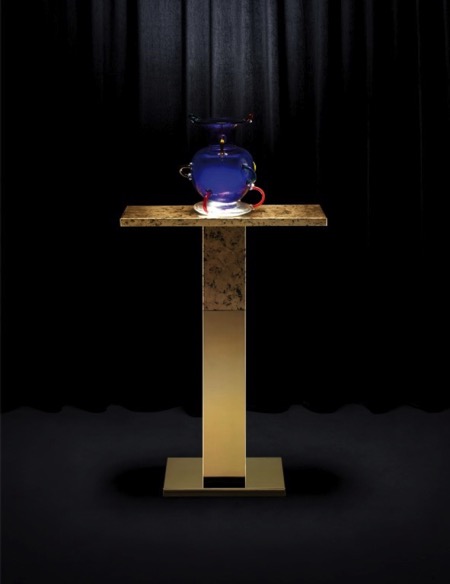
There is the fabulously surreal Champagne cooler in the shape of a large thimble, conceived by Studio Job, and one with large circular handles by Richard Hutten, who also designed a coat hanger in the shape of a stem on which there are wide-open winged butterflies. Everything is made with precision, from paper bins to fruit bowls, all characterised by a geometric weave, made so as not to require any welding of the sides.
Nika Zupanc’s platters in the shape of palm leaves are characterised by an outstanding surface finish. Then there are Stefano Giovannoni’s rectangular anthropomorphic platters, where geometric shapes are softened by a series of ‘humans’ who stand along the edges and also appear at the top of salt and pepper shakers, like a personal brand.
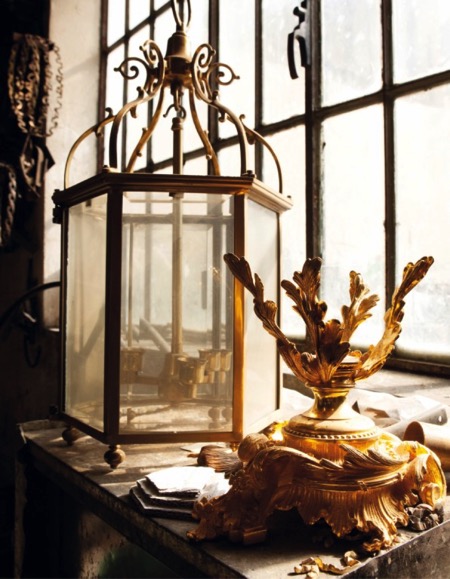
In its rich variety, the collection is a compendium of the most significant contemporary creative expressions, interpreted and enhanced by Ghidini’s skilful expertise and ability to interpret brass in all its possible shapes and finishes.
Shop the Ghidini 1961 collection and fill the home with stunning contemporary artworks.
Profile: designer Stefano Giovannoni
Stefano graduated in architecture at the University of Florence and is a designer who has mainly worked in home accessories and kitchenware.
He collaborated with international companies such as Alessi, Fiat, Lavazza, Pepsico, Samsung, Seiko, Siemens, Sodastream, 3M, Telecom, Toto, Veneta Cucine, and many others.
He has designed very successful products that have broken all sales records in the design field such as the Girotondo collections (over 10 million units sold) and Mami, the famous products of ‘FFF’ series for Alessi, the Alessi-one bathroom ware and the Bombo family for Magis.
Thanks to Stefano’s ability to intercept the tastes of the general public, he has been named ‘The champion of super and popular of the 2000s’ (A. Alessi); ‘Most designers bankable’ (E. Perazza) and ‘design King Midas’ (C. Morozzi).
essence info
Shop the Ghidini 1961 collection at www.amara.com
Website: www.ghidini1961.com
This article first appeared in The Lux Pad, www.amara.com/luxpad
Design in partnership
12/09/16 13:31
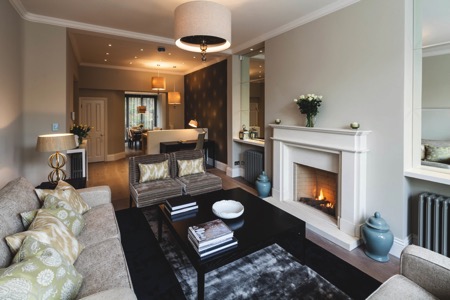
Interior designer Ruth Marshall discusses the reasons for engaging professional advice before commencing work on an interior design project.
Whether planning to refresh rooms or embarking on a more extensive refurbishment, you may wonder whether it is a worthwhile investment engaging a professional interior designer. Planning a new space can be daunting, and you may have concerns that a designer will ‘take over’, or that you could lose control of your budget. In reality, hiring a professional can save valuable time, help avoid costly mistakes and generally make the whole process less stressful and
more enjoyable.
The relationship with a designer is a partnership, with a shared vision to create something unique that reflects your tastes and personality. A designer’s experience and product knowledge helps narrow down choices and show what will work in your space, introducing niche products to make all the difference. They’re able to tailor projects to take account of specific requirements with custom-built joinery, beautiful bespoke upholstery and soft furnishings, and will have longstanding relationships with trusted professions and tradespeople. Don’t be afraid to ask for references if you want to be really sure.
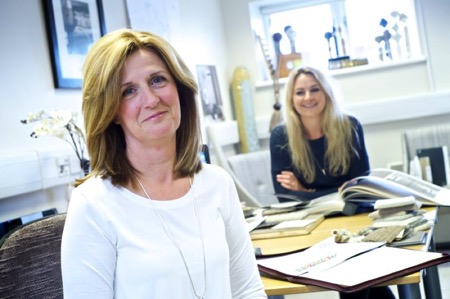
Our aim at Ruth Marshall Interior Design is to make the design process as stress-free and enjoyable as possible for our clients, combining luxury and comfort to create timeless, beautiful interiors in our signature classic contemporary style.
Our initial consultation is a friendly meeting of minds to explain how the design process works, understanding your lifestyle requirements. We’ll discuss budgets at this point too, as this will influence the choice of the best suppliers.
We’re often asked about current styles and whilst we love to keep abreast of interiors’ trends, it’s our view that it’s more important to ensure any new space is well planned, functional and flows with the rest of the house – it won’t look or feel quite right if one room has a completely different style and feel to the rest.
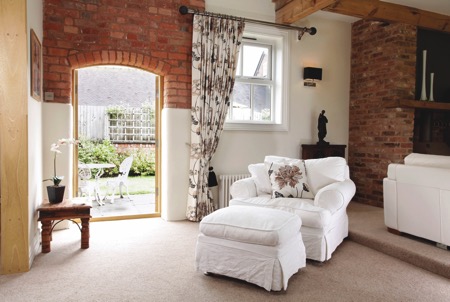
We’ll be taking a look at current and upcoming trends in essence magazine’s Interiors Supplement next month, so if you are about to embark on an interiors’ project it will be an interesting read.
essence info
With over 15 years of interior design and bespoke luxury soft furnishings experience, Ruth Marshall Interior Design offers the highest level of service from initial design through to final installation.
Websites: www.ruthmarshallinteriors.com
Email: studio@ruthmarshallinteriors.com
Telephone: 0203 590 6728